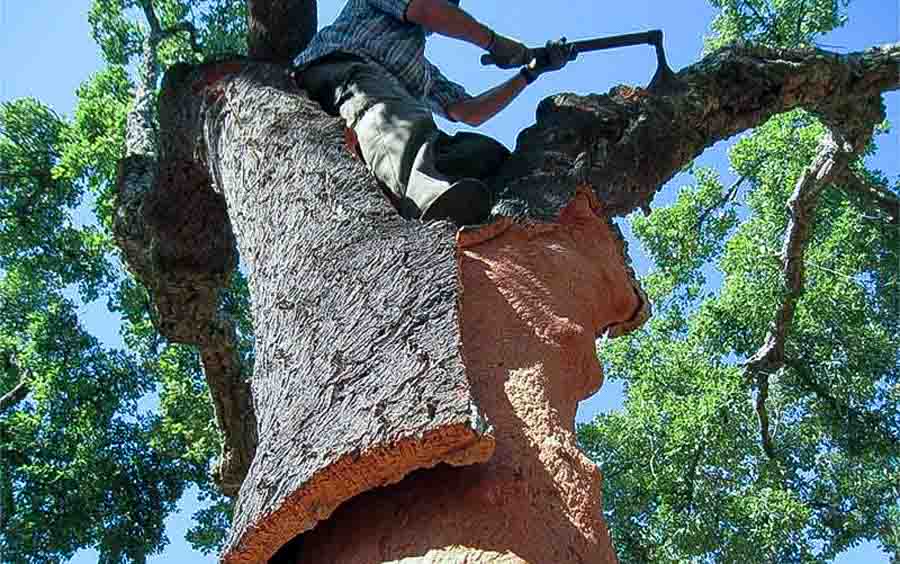Cork is the bark of the cork oak (Quercus Suber L.), which means it is a 100% natural vegetable tissue. It is formed by a hive of microscopic cells filled with an air-like gas and coated mostly by suberin and lenhiin. In their chemical composition, other compounds are also identified, although with less expression, such as polyacrylamide, choroids and tannins.
In a single cubic inch of cork there are almost 40 million cells – about 800 million in a single cork stopper.
Each cork is 25 years old before it can be uncorked for the first time and only from the third cork (at 43 years) cork, then called “amadia”, has the quality required for the production of stoppers.
The first two extractions – virgin cork and ‘seconder’– as well as the one withdrawn from the base of the tree, result in raw material for insulation, pavements and products for areas as diverse as construction, fashion, design, health, energy production or aerospace industry.
Extraction is carried out by highly specialized professionals, always between May and August, when the tree is in a more active growth phase and it is easier to discard it without harming the trunk. The cork oak is the only tree whose bark regenerates, acquiring a smoother texture after each extraction. It can be uncorked about 17 times over an average life span of 200 years.
But one of the oldest products in permanent use by man continues to bring new products, to application to life and also to arouse some curiosities.




